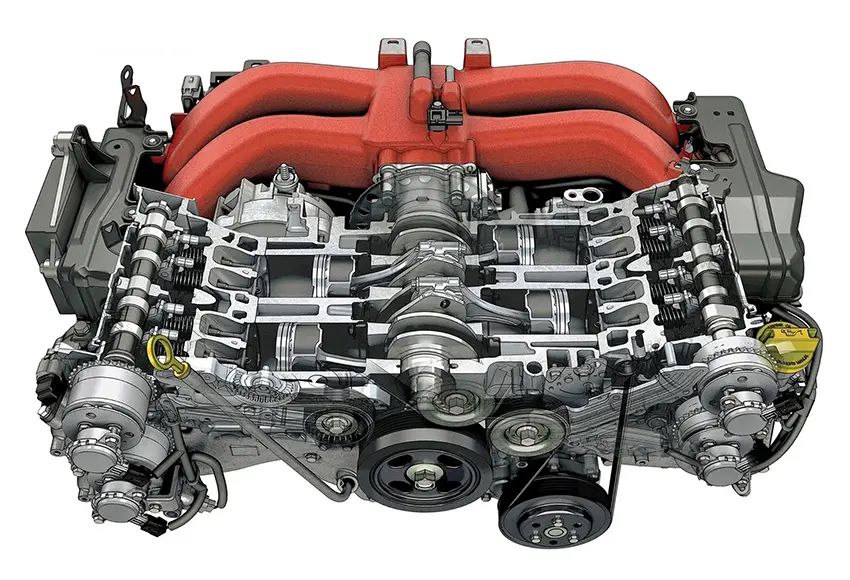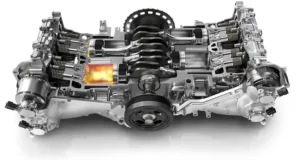What is a Boxer engine? Advantages and disadvantages of Boxer engines

Boxer engines have various advantages, such as better performance, quieter operation, and extended life.
Mục lục
ToggleWhat is a boxer engine?
A type of car engine with pistons and cylinders placed horizontally symmetrically is called a boxer engine (also known as a flat internal combustion engine). This type of engine is known as a Boxer because the pistons are positioned on the same plane, causing them to move in a manner reminiscent of boxers.
There are several possible cylinder arrangements in combustion engines, including an I-shaped line, two V-shaped rows, and three W-shaped rows. All of these arrangements are vertical, with the pistons and cylinders positioned at right angles to one another with respect to the surface (standing). The rows will be symmetrical at an angle of 60 degrees if there are two or more rows. The piston and cylinder are horizontal and parallel to the ground with the Boxer engine, though. This is how the Boxer engine is different from traditional internal combustion engines.
Karl Benz created the Boxer engine in 1896. He is the creator of the Mercedes-Benz and Daimler automobile groups. Karl Benz gave his new engine model, which had two pistons running in opposition to one another, the name “Contra Engine” after his development.

Later, this engine concept was improved and used in a variety of industries, including aviation, the production of motorcycles, and mainly cars. Porsche and Subaru are two well-known automakers that use Boxer engines. In particular, Boxer engines are found in practically all Subaru cars. Despite having their own research, Porsche and Subaru still largely use Karl Benz’s original “Contra Engine” concept.
Advantages and Disadvantages of Boxer engines
Advantages
Higher engine efficiency
The drive shaft and gearbox may be readily matched with the Boxer engine due to Boxer’s horizontal working style and flat framework. With fewer transmission middlemen, such as I- or V-engine architectures, the force generated by the piston’s movement may be sent to the crankshaft, the gearbox, and the wheel more directly. As a consequence of less waste being lost while passing through conventional components, the Boxer engine will perform better.
Quieter, longer life
The symmetrical horizontal construction means that when the Boxer engine is running, the opposing forces produced by the two piston chains will cancel one another out. Consequently, compared to other types of construction, Boxer engines are often quieter and less vibratory. Longer life also equates to less oscillation.
The vehicle’s center of gravity can be lowered
Boxer engines with horizontal structure will be smaller (in height) than vertical engines. The car’s center of gravity can be decreased as a result, improving stability at high speeds.
Disadvantages
Had to build own chassis
Due to the horizontal construction of the Boxer engine, it will appear to be a flat, long, and wide rectangle. This makes the layout of engines quite challenging. The manufacturer had to create its own chassis using more intricate calculations in order to fit the Boxer engine.
High production costs
Like the V-engine, the Boxer engine requires two rows of cylinders, so production costs will also be higher.

Each car company has its own story to be different, but most will follow the common tastes of customers. The majority of ordinary customers will not put the driving feeling as a top priority because sometimes that feeling is vague. For the few who want to be unique, the boxer engine is still addictive. Please contact Otocare for more detailed advice!





